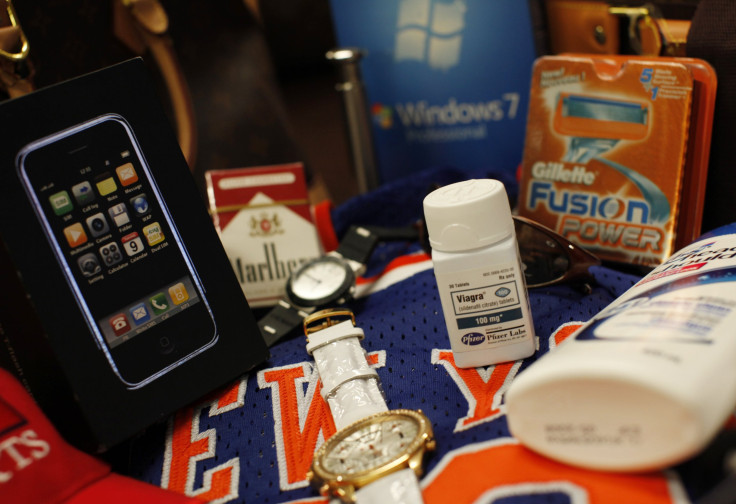Child Porn, Hacking Services Make Up Dark Net Economy That Replaces Law With Profit

Quick: Name something multimillionaire drug dealers, child porn peddlers and everyday hackers have in common. It’s not that they can all be found on the same cell block (although that’s probably true), but that they’ve each become major factors pushing the growth of an online black market known as the Dark Net.
Accessed primarily with the anonymizing Tor browser, the Dark Net is generally defined as the corner of the Deep Web where illegal activity flourishes. Whereas someone combing through the much larger Deep Web (any site unindexed by a search engine, which by some estimates accounts for 90 percent of the Internet) would come across libertarian book clubs, paywalled journalism and therapy discussions, someone looking at the Dark Net would find only criminal activity.
And lots of it.
Multiple FBI investigations have made it clear that an individual can make millions of dollars a year in this space. Prosecutors said they confiscated $28.5 million in bitcoin from Ross Ulbricht, the accused founder of the original Silk Road drug marketplace. Blake Benthall, the suspect behind the Silk Road 2.0, is believed to have generated $8 million in revenue each month simply by linking buyers and sellers then taking a percentage of the sale.
“He skims off the top,” Alan Woodward, a professor at the University of Surrey who also acts as a security consultant for Europol, said of the hypothetical Dark Net businessman.
“He’s basically an information broker, like eBay or Amazon, and there’s just a little service charge on top.”
Only instead of textbooks and iPads, Dark Net sellers have also begun to attract customers looking to invest in malware code that makes it possible for them to rip off even the most trusted retailers.
Take the SpyEye Trojan botnet creation kit, for example. The sophisticated tool used to infiltrate consumers and businesses alike was developed by Aleksander Panin, a 24-year-old Russian hacker who the FBI alleges sold the technology to 150 clients (one of whom may have stolen $3.2 million) at a price ranging from $1,000 to $8,500 depending on the version. The malware ultimately infected 1.4 million computers, prosecutors alleged, but only after Panin used the Dark Net to spread the word that his nefarious service was for sale.
Hackers aren’t just located in Russia or China, Woodward said, but throughout the world. He cited the ongoing debate over the origin of the Sony hack as proof that it’s sometimes impossible to determine where hacks come from, or where they can be requested.
“It’s the same sort of places where you’d buy stolen credit card details and other personal information,” he said. “But there’s so much of that now that the price has gone down, so a lot of hackers have moved into more personal services like targeted attacks, which can cost thousands of dollars.”
Indeed, even a brief tour of the Dark Net turns up a number of sites in this vein. The most prominent is Rent-A-Hacker, where visitors apparently can pay to simply break into a rival’s Facebook account, launch a distributed denial of service attack or have someone wrongfully arrested. (International Business Times was unable to independently verify the advertised services.)

But a growing body of research makes it clear that there is a real human cost that comes with wading into the Internet’s underbelly. More than four out of every five people who use Tor’s hidden services were traveling to pedophilia-related websites, according to a new research study obtained by Wired. That figure comes after years of investigations by the Crimes Against Children Research Center unveiled a trove of hidden peer-to-peer networks that make it possible for sex offenders to trade and discuss child porn without being detected.
“When people refer to the Dark Net they’re generally referring to peer-to-peer networks, which are often made up of child porn and certainly subject to a lot less scrutiny,” Janis Wolak, a senior researcher at the CACRC and a principal investigator in the National Juvenile Prostitution Study, told IBTimes. Potential participants may be forced to contribute new pornographic material in order to join an ongoing conversation or trading ring, she added.
“People can simply go to peer-to-peer networks and search for files and activity that return 'young child,' ” Wolak said, adding there are thousands of sites of this sort. “Trying to quantify all this is really difficult because you can learn that certain files are illegal, but there are always new files.”
What happens next is impossible to predict.
Entrepreneurs normally become successful by trying to attract as many customers as possible. Michael Jordan still earns nearly $80 million a year in part because of the Air Jordan marketing campaign, and Pepsi galvanized a generation of soda drinkers with the Pepsi Challenge campaign.
If the Silk Road’s downfall, the identification of Aleksander Panin and investigations into child porn sites are any indication, though, it’s possible that the most notorious Dark Net sites will be unmasked soon.
“I’m sure there are legitimate purposes,” Woodward said of the Deep Web. “There are people who want to remain private and not have their transactions monitored. But in terms of a legitimate business purpose? I can’t think of one.”
© Copyright IBTimes 2024. All rights reserved.




















